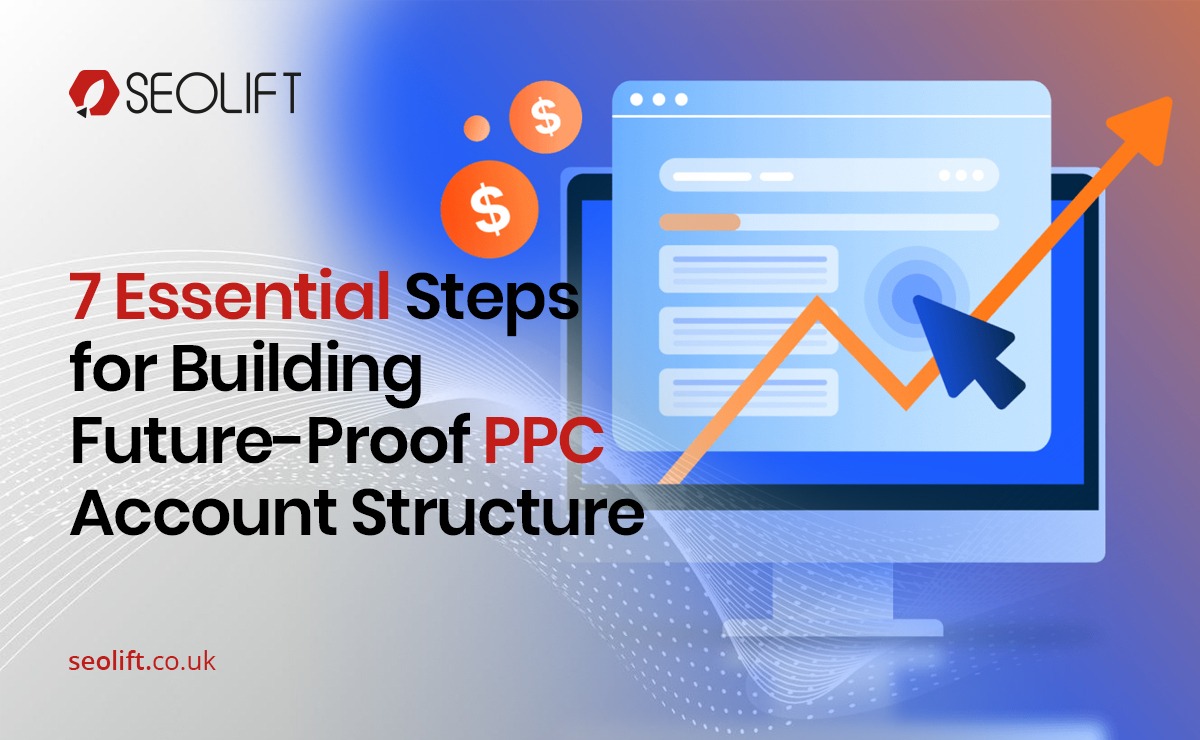
Navigating the ever-changing pay-per-click advertising account structure management landscape can be challenging. You should, iron out your account structure now to avoid future headaches.
Given the constant shifts in audience engagement rules and economic fluctuations, it’s critical to have a firm grasp on how to set up and manage your accounts with agility.
When it comes to future-proofing your PPC account structure, there are seven fundamental pillars to consider. Let’s take a look at each one!
Follow these seven steps to build a PPC account structure that can meet your industry’s needs now and in the future.
According to the best SEO agency London, a successful PPC account structure strategy should be financially viable. It is critical that your budget can support all of your campaign initiatives. A good rule of thumb is to have enough budget to cover at least ten non-branded search clicks daily. This helps to offset the costs of lower conversion rates associated with non-branded traffic, as those visitors have less commercial intent.
Although branded traffic typically has higher conversion rates and is less expensive, budgeting for less than ten clicks per day may place undue pressure on your campaigns to achieve an unrealistic 10% conversion rate. Furthermore, the introduction of Google Ads Performance Max campaigns introduces new budget considerations.
Understanding and adapting to changing audience engagement rules in pay-per-click advertising can be complex. However, it’s critical to keep your Google Ads account up to date on the latest targeting best practises and policies.
You should structure your account to include placement exclusions for display or video campaigns. To begin with, this can improve the performance of your account because you will only use impressions or clicks on someone relevant to your business.
The right balance between human control and AI (artificial intelligence) is a contentious issue in Google Ads for small businesses. As artificial intelligence (AI) in marketing becomes more popular, the positive and negative effects of AI on PPC have come to light.
For example, generative AI can assist you in the creation of assets for your PPC account, such as images, videos, and ad copy. Meanwhile, Google’s Search Generative Experience (SGE) may cause ads to appear lower on the page, so consider your Google Ads Quality Score when planning your PPC account structure.
Negative keywords are extremely useful for lowering costs and directing traffic. They can assist you in narrowing the searches you appear for so that you only appear for your primary keyword terms.
Using a keyword research tool, you can generate more negative keywords. Furthermore, using negative audiences with placements is a vital strategy frequently overlooked. If you only target audiences, you take advantage of the opportunity to protect your budget from unforeseen variables.
Audiences in Google Ads offer a one-of-a-kind opportunity to target or exclude potential traffic based on observed behaviours or predictive indicators of future actions. Audiences can be applied to your pay-per-click advertising account structure at the campaign and ad group levels and baked into broad match targeting.
When creating campaigns for your PPC account, it’s critical to identify your most important buyer personas and understand the creative strategies that will best engage them. Generally, each primary persona should have its own ad copy and visual strategy.
First-party data is critical in determining where and to whom your ads are served. In the meantime, if you’re not sure whether you can use first-party data—that is, getting consent from your prospects to track them and store their emails—consider using algorithmically learned audiences like in-market or custom intent based on search terms.
While these audiences may not perform as well as those sourced from your first-party data, they offer a better chance than not using audiences at all.
The final step in future-proofing your PPC account structure is to set up conversion tracking. It’s critical to strike a balance between privacy compliance and maintaining visibility into the performance of your campaign.
Consider the benefits and drawbacks of using GA4 events or other analytic events versus the native advertising conversion actions provided by Google Ads. Although native ad platform tracking can capture more information, you must deal with some attribution data modelling when you use external sources, such as GA4.
Building a future-proof PPC account structure can be difficult, but focusing on these seven core pillars will help you navigate the terrain. Remember to review and update your strategies regularly to keep up with changing industry trends and changes. Now is the time to work on your PPC account structure; your future self will thank you!
We offer the best-in-class Digital Marketing solutions to cater your brand and business needs. At Seolift, we have a team of experts who provide you with top notch digital marketing services. Our premium services include SEO, PPC, SMM and Content Marketing.
